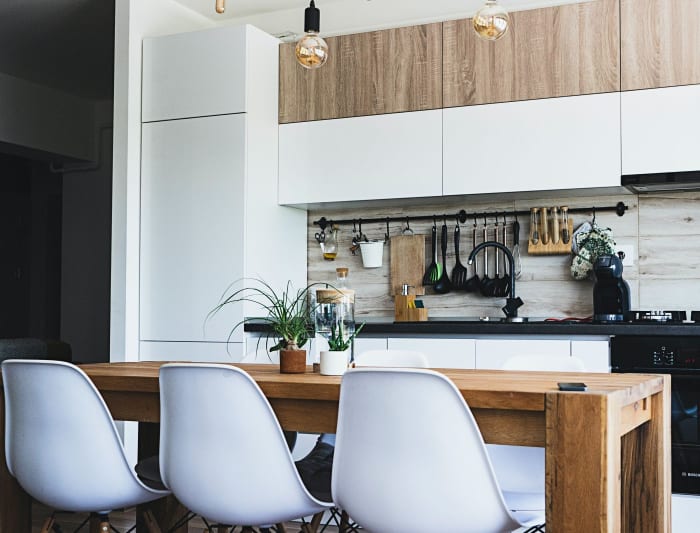What if you could be healthier by adjusting a few things around your house?
If the COVID-19 pandemic has taught us anything, it’s that our health and wellbeing should be a priority. You may not believe it, but many dangers to your health are lurking right inside your home. So what home improvements can you make right now that will lead to a healthier, happier you? We break some down below.
Check for Mold
Mold produces allergens and irritants that can be very hazardous to your health. However, mold is everywhere – indoors and outdoors. So how can you keep your home and belongings safe from mold? The mold experts at SERVPRO recommend checking your home for these signs:
- A strong, musty odor in specific areas of your home: this is often the first sign of a severe mold problem. If your home smells musty, contact a professional immediately.
- Any recent leaks: mold thrives in wet environments, and properties with a recent leak are at risk. Check all the water sources in your home, pipes below ground and possible leaks in the roof.
- Humidity above 45 percent: mold is pervasive, and it can grow in any environment with a humidity level above 45 percent. Keep humidity low and purchase a dehumidifier if you find that your home is constantly humid.
Caulk Up Holes and Crevices
Those holes and crevices in your home may not look like a big deal, but they’re very hazardous to your health in the late summer and autumn. According to the pest experts at Orkin, mice often enter homes through the cracks and holes in your wall, floors and foundation. Don’t expect to see a spot with little Mickey Mouse ears, either – mice can squeeze through incredibly tiny holes. According to the CDC, mice are hazardous to your health because they carry diseases such as hantavirus, hemorrhagic fever, Lassa fever, plague and rat-bite flu. Take the time to seal any holes with caulk, metal or cement.
Add Some Plants
Houseplants are a fantastic and easy way to improve your health. According to the experts at Healthline, the benefits of houseplants range far and wide, including:
- Reducing stress
- Sharpening attention
- Improving mental health
- Illness recovery
- Boosting productivity
- Improving air quality
Increased health could be as close as a houseplant! Spider plants, aloe vera, monstera and peace lilies are all hardy houseplants. If your home doesn’t have much light, we recommend prayer-plants, lucky bamboo and devil’s ivy.
Test Paint Surfaces for Lead
Lead paint is a serious hazard, and it’s very prevalent – according to the Environmental Protection Agency, 87 percent of homes built before 1940 contain lead-based paint, while 24 percent of homes built between 1960 and 1977 have lead-based paint. A recent Real Simple article noted that lead paint can damage the brain and vital organs, cause behavioral problems, learning issues, seizures and even death. How can you identify and eradicate potential sources of lead paint in your home?
- Check paint quality: according to Real Simple, lead paint is most dangerous as it begins to deteriorate (think peeling, chipping, etc.) and even the act of removing the paint can produce hazardous lead dust. So swab any peeling paint in an older home with a lead paint test kit.
- Hire an inspector: if your home was built before 1978 or you’ve had a positive result with an at-home lead paint test kit, it’s a good idea to hire an inspector to assess the risks of your property.
Use a HEPA-Filtered Vacuum Cleaner
While this might not ‘technically’ be a home improvement project, using a HEPA-filtered vacuum cleaner during your weekly clean can make a world of difference to your health. HEPA stands for high-efficiency particulate air, and according to WebMD, “it works by forcing air though a fine mesh that traps harmful particles such as pollen, pet dander, dust mites and tobacco smoke.” These filters go a long way towards eliminating allergens in the air – meaning a healthier, happier you.
Install a Home Gym
Heart disease claims the lives of millions of Americans every single year, and exercise is one of the best ways to combat the disease and make sure that you keep your heart healthy. Enter the home gym. Before you panic, we’re not suggesting that you go out and spend thousands of dollars on gym equipment. Instead, take a look at our best tips for creating a home gym below:
- Be honest about your goals: the secret to creating (and using) a home gym is honesty about your plans. Only invest in the equipment you need. If you’re not a runner, don’t buy a treadmill, but invest in good yoga equipment if you’re an avid yogi.
- Don’t use the entire room if you don’t have to: if space is premium, don’t feel like you need to use the whole room. A combination gym/office can offer all the benefits of a home gym without the extra space.
Whether it’s naturally first on your mind or something you tend to ignore, we all know our health should be a priority. Starting inside your home, this could be your healthiest year yet.
The Editorial Team at Lake Oconee Health is made up of skilled health and wellness writers and experts, led by Daniel Casciato who has over 25 years of experience in healthcare writing. Since 1998, we have produced compelling and informative content for numerous publications, establishing ourselves as a trusted resource for health and wellness information. We aim to provide our readers with valuable insights and guidance to help them lead healthier and happier lives.
































